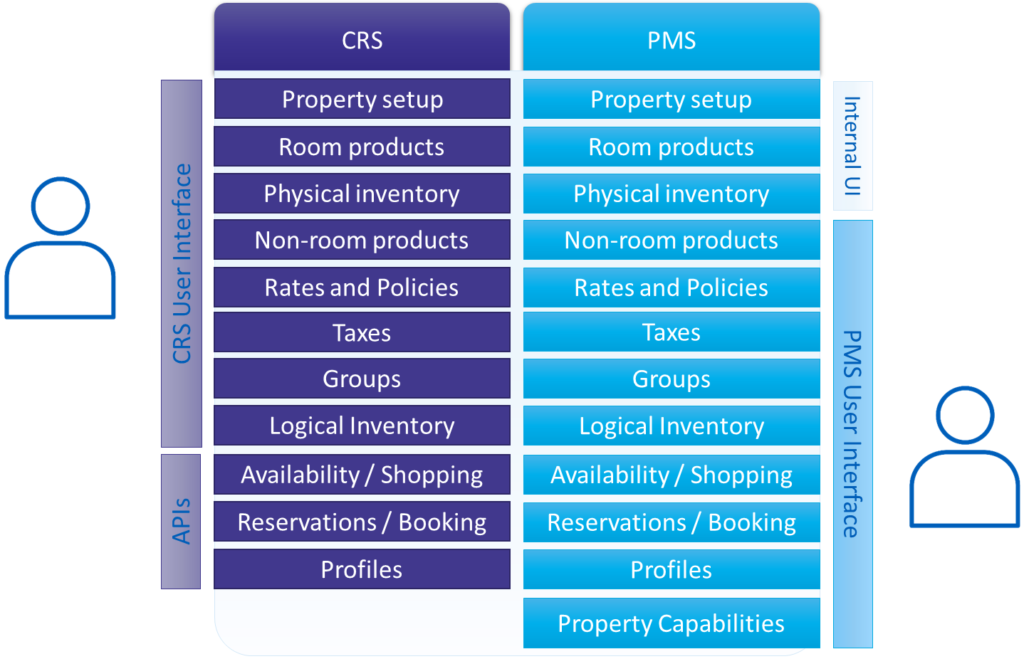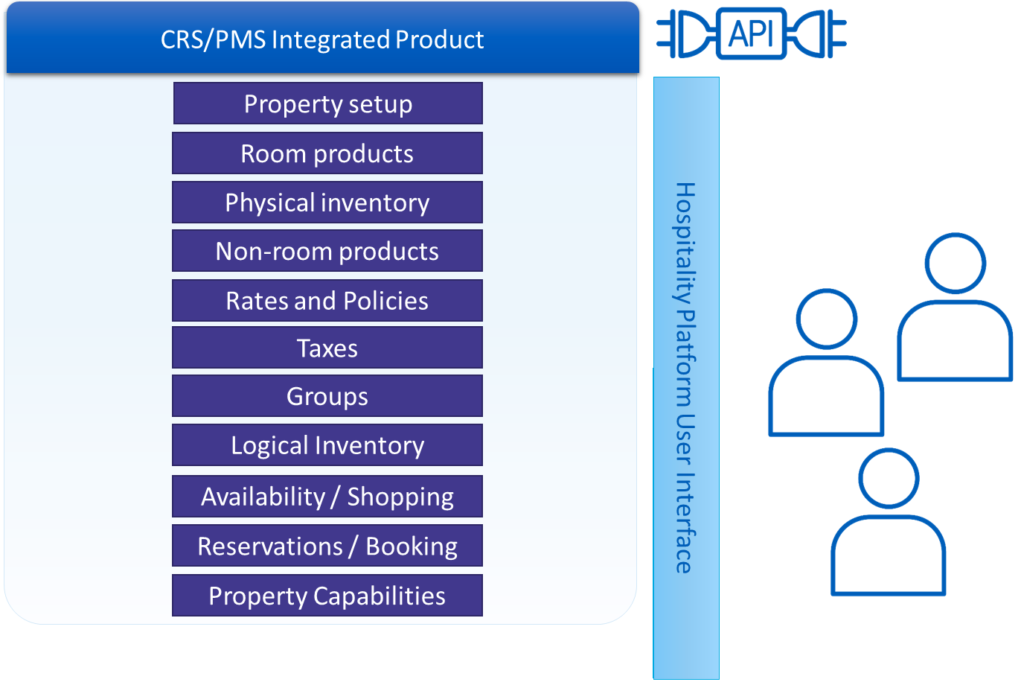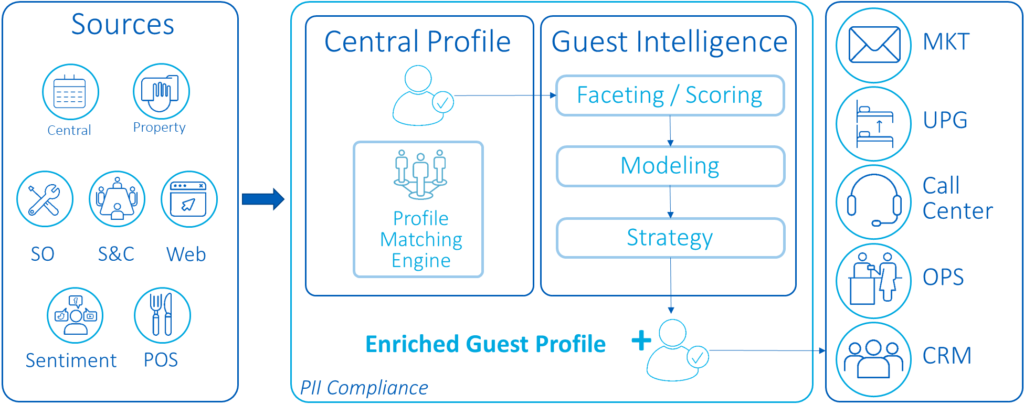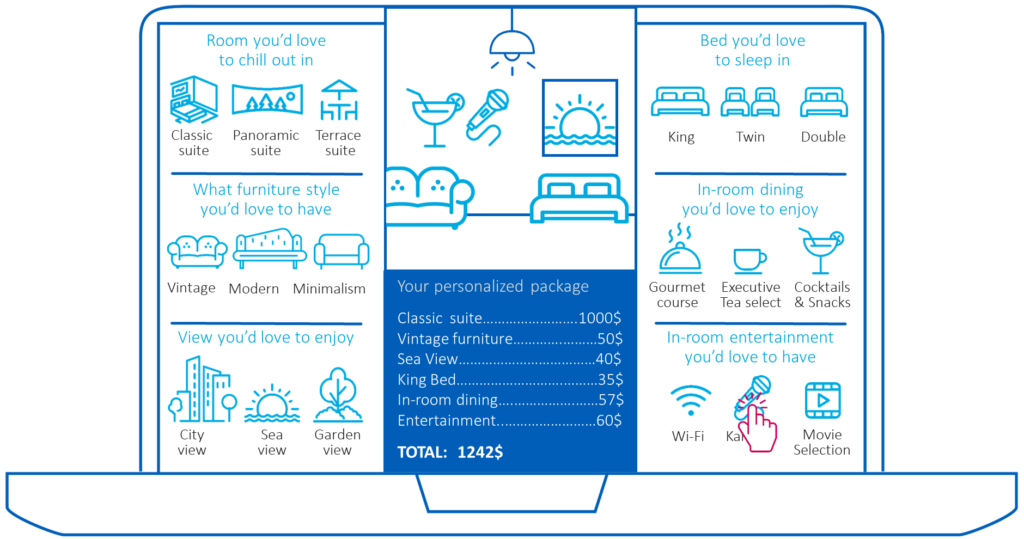
Recent trends in enterprise hospitality software are breaking down long-standing barriers between management systems such as the CRS and PMS, that have traditionally operated in semi-isolation from one another.
In this article, we detail the increasing convergence of CRS and PMS systems into a single unified platform offers many benefits for chains and guests alike, and solves several challenges that have plagued the industry for decades.
What is the difference between a CRS and a PMS?
It is important to first understand the difference between these two main enterprise hotel software systems and how these were managed in the past.
The Central Reservations System (CRS) sits above the property level to manage and distribute Availability, Rates and Inventory (ARI) to guests via various channels.
The Property Management System (PMS), meanwhile, manages all of the on-premises management needs (housekeeping, POS, check-in/check-out, etc.).
One Enterprise, Two Management Systems
These systems operate separately from one another, with regular synchronization required to match data between the two systems. This has been standard operating procedure for decades, but it comes with many challenges and drawbacks.
In the best case scenario this would merely result in data duplication, where the same data resides in multiple databases. In the worst case, data from the two systems does not synchronize properly or in a timely fashion, causing data fragmentation and discrepancies between the two systems.
And any number of influences could cause inconsistent synchronization between the two systems. Technology limitations of the past made it difficult and time consuming to sync large sums of data. Manual processes lead to oversight and human error, causing massive ARI discrepancies between the two databases – discrepancies which directly impact revenue.
Modern technology advancements are changing the game. Many software providers are leveraging cloud computing to create a single, unified database and management platform. This growing trend towards convergence is causing the lines between CRS and PMS to become increasingly blurry, with all indications pointing towards a shift away from the two-system paradigm.
Convergence at a Glance
Data duplication and fragmentation is a big problem, especially between CRS and PMS platforms. It can cause significant inconsistencies with ARI across different distribution channels. And visualizing the duplication dilemma puts the issue in clear perspective, with data duplicated in the CRS and the PMS for most major hotel functions:

The trend towards convergence removes this duplication barrier, and allows hotels and chains to manage all their systems from one single “point of truth” database to eliminate revenue-sapping discrepancies:

Additional Benefits
With data from all guest touch points encapsulated in a single repository, it becomes possible to develop rich, detailed guest profiles, allowing you to deliver highly targeted programmatic marketing campaigns, offers, and upgrades:

Another major benefit of CRS/PMS convergence and a single enterprise database is the unbundling of in-room and non-room inventory. With a single view of the entire enterprise inventory (and 0% chance of discrepancy), hotels can begin to deliver Attribute Based Shopping capabilities. By offering guests the ability to create bespoke accommodations from an available list of property attributes, hotels can be more competitive from a value standpoint, and can deliver deeper levels of personalization for their guests:

The Future of Hospitality Management
Many companies are already exploring the integration of CRS and PMS systems into one single management hub. On-property systems will gradually become just a plugin into a centralized CRS. You add the capabilities you need into the hub (housekeeping, revenue management, sales & catering, etc.) as you need them, and they can then read and write to the central database. This solves many of the data management problems caused by the dual system approach of the last 50 years while delivering greater guest intelligence and new ways of selling inventory. The single system approach is poised to help the hospitality industry better optimize revenue and elevate the guest experience — this time for the next 50 years.
Are you interested in learning more? Contact us anytime, we’d be happy to schedule a demo or put you in touch with a product expert.




